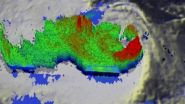(Press-News.org) "Don't forget! Check blood sugar before and after physical activity."
"Use small plates! Portions will look larger and you may feel more satisfied after eating."
"Tick, tock. Take your medication at the same time every day!"
These are just a few of the text messages that participants received as part of the Dulce Digital study conducted by the Scripps Whittier Diabetes Institute, a subsidiary of Scripps Health and one of the nation's leading diabetes research, patient care and education organizations.
Initial results of the Dulce Digital study were presented at the 74th Scientific Sessions of the American Diabetes Association in San Francisco on June 13. The study findings suggest that a text message-based self-management intervention improves glycemic control in high risk Latinos with type 2 diabetes.
"The use of mobile phones in health care is very promising, especially when it comes to low-income populations with chronic diseases," said Athena Philis-Tsimikas, M.D., corporate vice president for the Scripps Whittier Diabetes Institute. "We found that by using text messages we were able to circumvent many of the barriers these patients face, such as lack of transportation or childcare, while still being able to expand the reach of diabetes care and education."
Scripps partnered with a San Diego-based community clinic that provides services to a large proportion of Latino patients with type 2 diabetes. The 126 study participants were randomized into one of two arms: standard diabetes management care (control) only or text messaging and standard care. Standard care consisted of regular visits with a primary care physician and a brief computerized presentation conducted in English or Spanish that included; diabetes nutrition standards; desired targets for blood sugar, cholesterol and blood pressure; and medications recommended to achieve control.
For the text messaging group, the same standard care was provided but in addition messages were sent to their mobile devices at random times throughout the week. The messages focused on healthy nutrition tips, the benefits of physical activity and medication adherence, and requests to check blood sugar and send back results. Two to three messages were sent each day at the beginning of study enrollment, and the frequency tapered off over a six-month period.
"At the six-month mark, we found that the Dulce Digital participants had a significantly larger decrease in hemoglobin A1c test levels than the control group," said Dr. Tsimikas.
Potential next steps include incorporating text messaging into conventional self-management education programs. Patients may be seen in one-on-one visits or groups visits and then have the text messages added as supplements once they get home. Messages would continue as ongoing reminders of care over the next six months.
INFORMATION:
The McKesson Foundation was a funding partner that supported the conduct of this study.
ABOUT SCRIPPS HEALTH
Founded in 1924 by philanthropist Ellen Browning Scripps, Scripps Health is a nonprofit integrated health system based in San Diego, Calif. Scripps treats a half-million patients annually through the dedication of 2,600 affiliated physicians and 13,750 employees among its five acute-care hospital campuses, hospice and home health care services, and an ambulatory care network of physician offices and 25 outpatient centers and clinics.
Recognized as a leader in the prevention, diagnosis and treatment of disease, Scripps is also at the forefront of clinical research, genomic medicine and wireless health care. With three highly respected graduate medical education programs, Scripps is a longstanding member of the Association of American Medical Colleges. In 2014, Truven Health Analytics named Scripps one of the top five large health systems in the nation for the third year, and Scripps hospitals are consistently ranked by U.S. News & World Report among the nation's best. Scripps is regularly recognized by Fortune, Working Mother magazine and AARP as one of the best places in the nation to work. More information can be found at http://www.scripps.org.
Text messages helpful in controlling diabetes
Scripps Whittier study shows potential for improving glycemic control in Latinos
2014-06-14
ELSE PRESS RELEASES FROM THIS DATE:
Cracks in Pluto's moon could indicate it once had an underground ocean
2014-06-13
If the icy surface of Pluto's giant moon Charon is cracked, analysis of the fractures could reveal if its interior was warm, perhaps warm enough to have maintained a subterranean ocean of liquid water, according to a new NASA-funded study.
Pluto is an extremely distant world, orbiting the sun more than 29 times farther than Earth. With a surface temperature estimated to be about 380 degrees below zero Fahrenheit (around minus 229 degrees Celsius), the environment at Pluto is far too cold to allow liquid water on its surface. Pluto's moons are in the same frigid environment.
Pluto's ...
UH's Thomas Colbert addressing Galveston Bay's Challenges at Rotterdam Biennale
2014-06-13
Coastal communities are often relaxing locales with lush natural attributes. At the same time, they face many challenges from both natural and manmade elements.
Thomas Colbert, professor at the University of Houston's Gerald D. Hines College of Architecture, dedicates his research to discovering ways to protect coastlines and delta regions from severe weather threats and other dangers. This week, he joins a roster of international scholars, designers and architects at the 2014 International Architecture Biennale Rotterdam (IABR) in the Netherlands.
Colbert is among ...
NIH scientists take totally tubular journey through brain cells
2014-06-13
VIDEO:
Researchers watched TAT proteins (green) journey into microtubules (red). TAT proteins are known to label the insides of the tubes. They observed that TAT can move quickly, back and...
Click here for more information.
In a new study, scientists at the National Institutes of Health took a molecular-level journey into microtubules, the hollow cylinders inside brain cells that act as skeletons and internal highways. They watched how a protein called tubulin acetyltransferase ...
NASA experiments recreate aromatic flavors of Titan
2014-06-13
NASA scientists have created a new recipe that captures key flavors of the brownish-orange atmosphere around Saturn's largest moon, Titan.
The recipe is used for lab experiments designed to simulate Titan's chemistry. With this approach, the team was able to classify a previously unidentified material discovered by NASA's Cassini spacecraft in the moon's smoggy haze.
"Now we can say that this material has a strong aromatic character, which helps us understand more about the complex mixture of molecules that makes up Titan's haze," said Melissa Trainer, a planetary scientist ...
'Exquisitely engineered' human vision featured in Optical Engineering
2014-06-13
BELLINGHAM, Washington, USA — A new special section on Human Vision in the current issue of Optical Engineering showcases optics and optical engineering research into new techniques and approaches for the study of human vision and the design of novel imaging systems. Put into practice, these new approaches enable applications such as earlier diagnosis of disease, improved treatment monitoring, and more accurate guidance for treatment and surgery. The journal is published by SPIE, the international society for optics and photonics.
The special section includes 11 papers ...
NASA sees Tropical Storm Nanauk's soaking swan song
2014-06-13
VIDEO:
This TRMM satellite flyby animation shows that Tropical Storm Nanauk contained powerful towering thunderstorms that were reaching heights of up to 16.8 km (10.4 miles) on June 11, 2014....
Click here for more information.
Tropical Storm Nanauk was dissipating in the Arabian Sea on Friday, June 13 as it ran into increasing vertical wind shear, dry air moving into the tropical cyclone and cooler sea surface temperatures. NASA's TRMM satellite observed the soaking rains the ...
NASA sees Hurricane Cristina making a reverse in strength
2014-06-13
Hurricane Cristina intensified rapidly on June 12 and infrared satellite data showed cloud top temperatures became extremely cold as thunderstorms towered to the top of the troposphere. One day later, Cristina was weakening quickly and infrared data showed cloud top temperatures were warming as the cloud tops dropped.
Infrared data basically reads a cloud top's temperature. When NASA's Aqua satellite passed over Hurricane Cristina early on June 12, cloud top temperatures exceeded -80C (-112F). Today, June 13, infrared data showed cloud top temperatures had warmed to near ...
Nurses play critical role in responding to global resurgence of pertussis
2014-06-13
(June 13, 2014)- Concerted effort is needed to reverse the ongoing rise in pertussis cases and deaths, especially among children and young people, according to the article by Emily Peake, APRN, MSN, FNP-C, CLC, and Lisa K. McGuire, MSN, MBA-HCM, RN. "This effort begins with nurses and nurse practitioners and other primary care providers who educate patients and the public," they write. "The battle of pertussis is winnable through education, awareness, and vaccination."
In US and Abroad, Rising Rates of Pertussis Infection and Death
Caused by infection with Bordetella ...
UH research focuses on how food marketing creates a false sense of health
2014-06-13
Health-related buzzwords, such as "antioxidant," "gluten-free" and "whole grain," lull consumers into thinking packaged food products labeled with those words are healthier than they actually are, according to a new research study conducted by scholars at the University of Houston (UH).
That "false sense of health," as well as a failure to understand the information presented in nutrition facts panels on packaged food, may be contributing to the obesity epidemic in the United States, said Temple Northup, an assistant professor at the Jack J. Valenti School of Communication ...
Who's using your data?
2014-06-13
By now, most people feel comfortable conducting financial transactions on the Web. The cryptographic schemes that protect online banking and credit card purchases have proven their reliability over decades.
As more of our data moves online, a more pressing concern may be its inadvertent misuse by people authorized to access it. Every month seems to bring another story of private information accidentally leaked by governmental agencies or vendors of digital products or services.
At the same time, tighter restrictions on access could undermine the whole point of sharing ...
LAST 30 PRESS RELEASES:
Modulating key interaction prevents virus from entering cells
Project explores barriers to NHS career progression facing international medical graduates
Jeonbuk National University researchers explore the impact of different seasonings on the flavor perception of Doenjang soup
Two Keck Medicine of USC Hospitals named Leapfrog Top Teaching Hospitals
World-first discovery uncovers how glioblastoma tumours dodge chemotherapy, potentially opening the door to new treatments
A fatal mix-up: How certain gut bacteria drive multiple sclerosis
New AI tool identifies not just genetic mutations, but the diseases they may cause
Deep-learning model predicts how fruit flies form, cell by cell
Combination pills for high blood pressure may simplify treatment, improve long-term health
Immune system keeps mucosal fungi in check
Neurons within the brain use simple rules to localize genetic messages
Electrodes created using light
Second-hand gift-giving is a well-deliberated decision
How human interaction drove evolution to make bears less aggressive
National Poll: Few parents offer teens guidance on healthy eating during holiday season
Cannabis derivatives could provide new ovarian cancer treatments
Raising strong yeast as a petroleum substitute
Clues to the origin of hot Jupiters hidden in their orbits
Canada’s reduced pledge to Global Fund will impact domestic health
1 in 4 children with major traumatic injuries not cared for in pediatric trauma centres
Duke and Duke-NUS’ joint cross-population research to uncover "East-West" differences in disease and care
Scientists to ‘spy’ on cancer- immune cell interactions using quantum technology breakthrough
Tech savvy users have most digital concerns
Making lighter work of calculating fluid and heat flow
Normalizing blood sugar can halve heart attack risk
Lowering blood sugar cuts heart attack risk in people with prediabetes
Study links genetic variants to risk of blinding eye disease in premature infants
Non-opioid ‘pain sponge’ therapy halts cartilage degeneration and relieves chronic pain
AI can pick up cultural values by mimicking how kids learn
China’s ecological redlines offer fast track to 30 x 30 global conservation goal
[Press-News.org] Text messages helpful in controlling diabetesScripps Whittier study shows potential for improving glycemic control in Latinos






